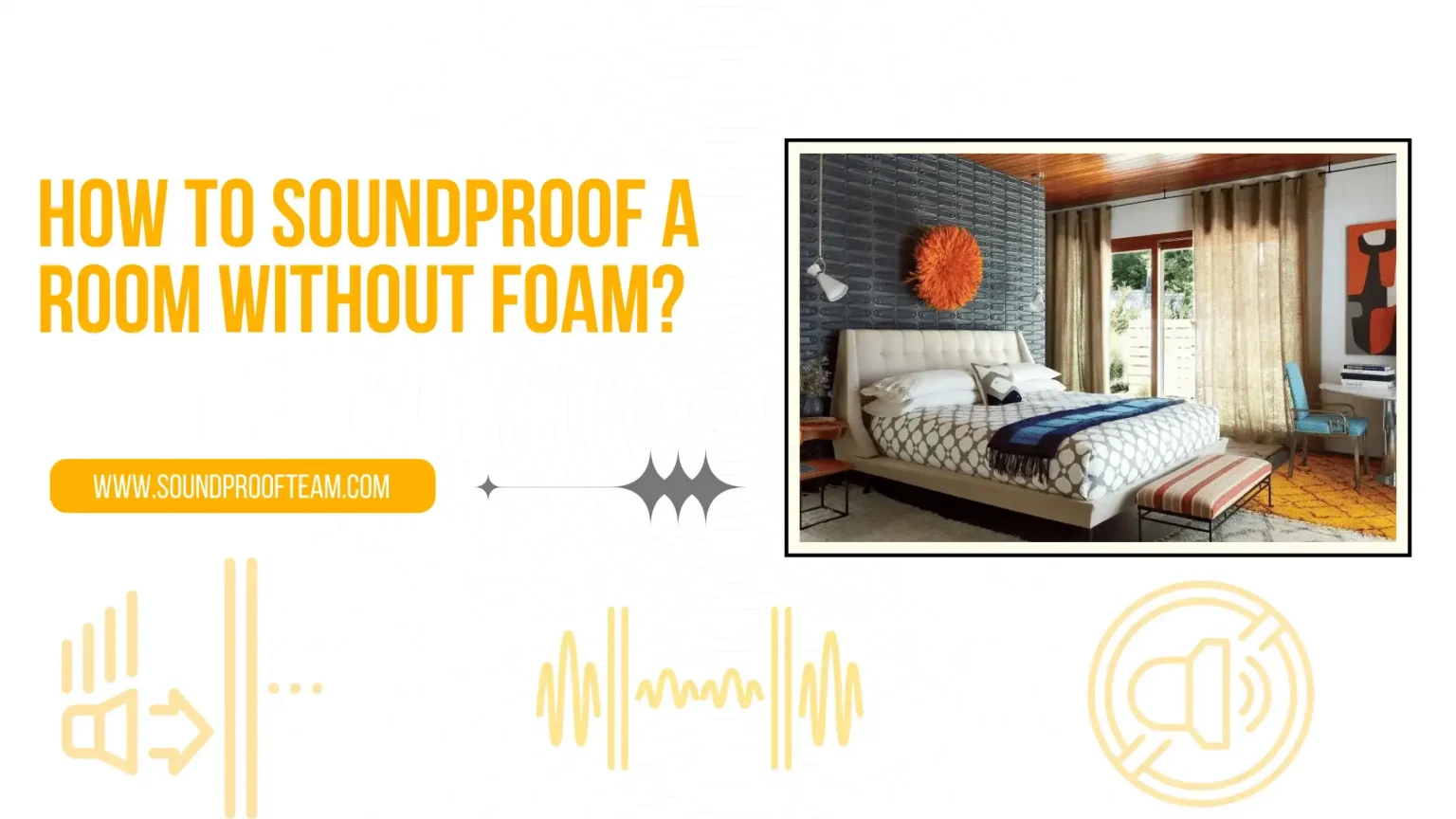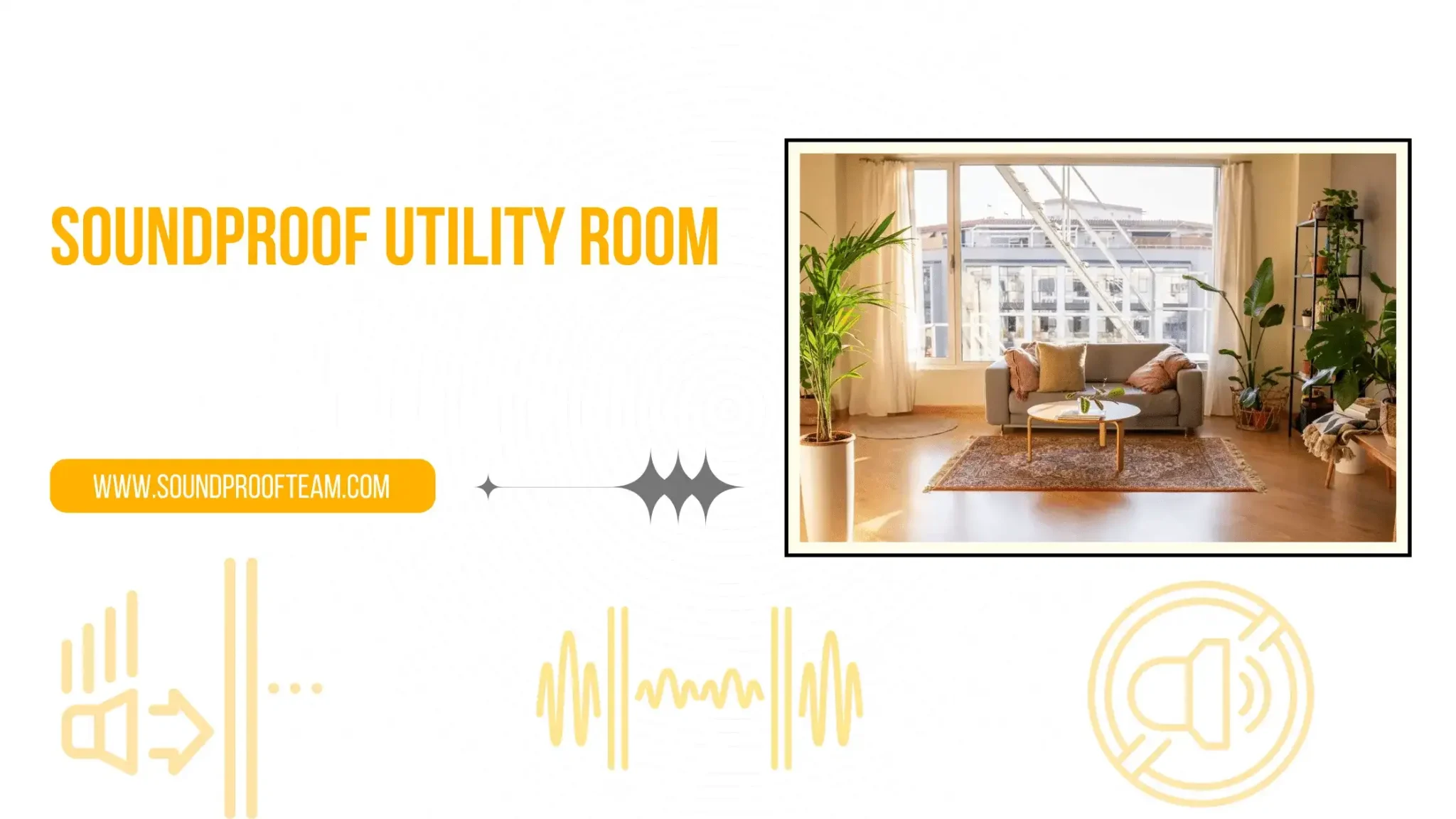If you’ve ever wanted to make a space of your own without any distractions, soundproofing is the key. Whether it’s for an office or a home studio setup, no one likes the background noise from neighbors talking and TVs blaring; having a soundproofed room can come in handy in many places. While acoustic foam may be the go to choice for those looking to dampen unwanted sounds, there are actually other ways to add soundproofing elements that don’t involve putting up expensive panels all over your walls.
Here, we’ll explore some alternatives to acoustic foam that you can use when trying to find out how to soundproof a room without spending too much money.
Effective Ways to Soundproof a Room Without Foam – A Comprehensive Guide:
Use Heavy Curtains and Rugs:
The weight of the curtain or rug can help absorb sound waves and make it difficult for sound to travel through. This is one of the simplest methods that you can use to reduce sound traveling in and out of a room without foam insulation. The fabric of the curtains or rugs should be thick and heavy and preferably made from velvet, cotton, or wool.
Install Acoustic Panels:
Acoustic panels are one of the most popular soundproofing methods for a room without foam insulation. These panels absorb sound waves that hit them, preventing noise from traveling outside the room.
You can install these panels directly on walls and ceilings, allowing for effective and easy soundproofing. It is important to make sure that the panels are properly sealed, so you don’t want any gaps in between them.
Utilize Mass Loaded Vinyl (MLV):
Another amazing option to soundproof without foam is mass loaded vinyl or MLV. This material is a thin but very heavy rubber that can be easily installed onto walls and ceilings of the room you want to soundproof. MLV is a great option because it is very effective at absorbing sound waves and can be purchased in rolls.
Use Soundproof Windows:
Soundproof windows are another excellent method of soundproofing a room without foam insulation. These windows have thicker glass panels that absorb sound waves, preventing them from entering the room. This is one of the more expensive methods of soundproofing but is highly effective.
Add Sealing Caulk Around Doors and Windows:
Adding sealing caulk around doors and windows can help reduce the amount of noise entering a room from outside. This method works by stopping air leaks that can allow sound waves to get into the room, making it difficult for external noise to make it through. It’s an effective way to soundproof your room without foam.
Hang Sound Absorbing Banners or Rugs:
Hanging sound absorbing banners or rugs is another great method to reduce noise traveling into a room without foam insulation. These items should be thick and heavy in order to effectively absorb sound waves. When hung on walls, they can act as acoustic panels and greatly reduce the amount of noise entering the room.
Understanding the Importance of Sound Control in Rooms:
- Sound control is an important aspect of home design. It plays a big part in the overall comfort and atmosphere of a space, as it can help reduce noise from outside or echoing within the room.
- If soundproofing is not done properly, you will end up having to listen to more noise than necessary. This can significantly decrease the quality of life in your house, making it difficult to concentrate or relax.
- Without the proper soundproofing in a room, you can be exposed to higher levels of noise than normal. This can lead to hearing damage or discomfort for those living in the space.
- Soundproofing is especially important if you are working from home or recording music. A properly soundproofed room will help improve the final product and make it easier for you to focus.
- A well soundproofed room also allows you to have more privacy from external sound sources. This can be beneficial if you want to keep your conversations and activities private.
Maintaining a Soundproofed Room:
Check for Gaps:
Every few months inspect your soundproofing to make sure there are no gaps or openings that could be allowing noise into the room. Seal any cracks you might find with caulk or acoustic foam.
Replace Acoustic Foam:
Over time, acoustic foam can degrade and become less effective at absorbing sound waves. If you have acoustic foam in your room, make sure to replace it when necessary.
Use Heavy Fabrics:
Hang heavy curtains or sound absorbing blankets on your walls and floors to ensure that no sound is able to travel in or out of the room. It’s also important to replace these fabrics when they start to show signs of wear.
Monitor Air Vents:
If you have active air conditioning or heating in your room, the vents can be a source of noise leakage. Make sure that all air vents are properly sealed so that no sound is able to escape from them.
Repair Leaks:
If you find that air is leaking from around windows or doors, seal these openings with caulk to prevent sound from entering the room. This will help keep the room soundproof.
Conclusion:
Soundproofing a room without foam is possible with some creativity and research. You don’t have to spend hundreds of dollars on sound absorbing pieces of foam in order to make your room quieter and more comfortable.
Whether you repurpose an old bookshelf as a makeshift sound barrier or create custom fabric wall hangings, both solutions allow you to customize the look and feel of the space. It may take some trial and error, but the end result will be worth it!
If you want even better results, consider consulting an audiologist for additional advice on how to reduce external noise. Armed with these ideas, you can now get started on soundproofing your own space without foam.






